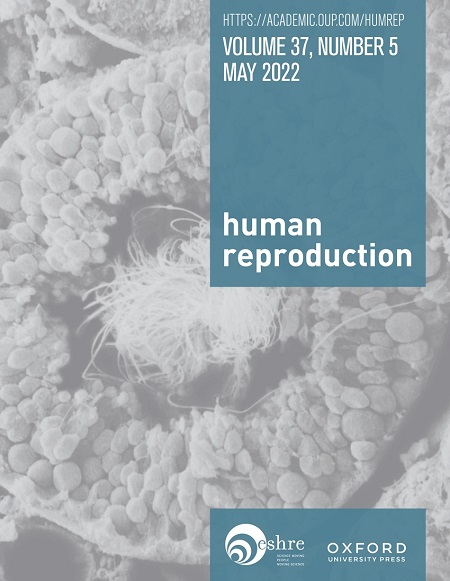Comparative analysis of the organization of endometriosis care in five high-income countries: implications for health systems and policy
IF 6.1
1区 医学
Q1 OBSTETRICS & GYNECOLOGY
引用次数: 0
Abstract
STUDY QUESTION How is endometriosis care organized at the primary, secondary, and tertiary care levels in five high-income countries? SUMMARY ANSWER In all countries under study, initiatives have been taken to provide endometriosis care by experienced health care professionals in a multidisciplinary setting, but certification criteria for secondary and tertiary centres vary greatly across countries. WHAT IS KNOWN ALREADY Endometriosis is a highly prevalent and complex disease with potentially significant physical, sexual, psychological, social, and economic impacts on those affected. Logically, a multidisciplinary approach by health care providers with expertise and experience has been recommended. STUDY DESIGN, SIZE, DURATION This study included five high-income countries where endometriosis care was centralized to some extent or where a national action plan for endometriosis was developed. PARTICIPANTS/MATERIALS, SETTING, METHODS Based on a review of the literature, five countries were selected: Australia, Denmark, Germany, the Netherlands, and the UK. Information was collected through a review of peer-reviewed and grey literature that was revised and amended by experts from each country. MAIN RESULTS AND THE ROLE OF CHANCE In 2018, Australia launched a comprehensive government-led national action plan for endometriosis. In Germany, secondary and tertiary endometriosis care is organized at three levels, while in Denmark and the Netherlands, a two-level system has been installed, whereas in the UK, only tertiary referral centres have been initiated to date. Only in Denmark must secondary care centres refer patients with advanced endometriosis to tertiary care centres. In all countries studied, treatment for advanced endometriosis is also carried out in centres without certification, where the quality of care is not assessed. National endometriosis registries have commenced and are active in Australia and the UK. In the selected countries, various initiatives have been taken to enhance the training of health care professionals, to inform patients, and to increase awareness on endometriosis. In none of the studied countries is endometriosis (automatically) recognized and/or registered as a chronic condition. LIMITATIONS, REASONS FOR CAUTION In the five countries evaluated, there are continuing efforts to further improve the organization of endometriosis care. With ongoing revisions of service provision, resourcing and health care structures for endometriosis are evolving considerably; therefore, this overview should be considered as a snapshot taken up to early 2025. Since this overview relies principally on scientific literature, policy documents, and expert opinions, and not on objective outcomes, there may be dyssynchrony between what is summarized here and actual clinical practice. WIDER IMPLICATIONS OF THE FINDINGS This overview may provide advice and guidance for policy makers in the development of a framework for the organization of endometriosis care in their country. STUDY FUNDING/COMPETING INTEREST(S) The research was supported by the government-approved work program of the Belgian Health Care Knowledge Centre (KCE). C.N. is funded though the NECST Network grant (4-I66SNMA) from the Australian Government Department of Health and Aged Care, manages research grant funding from the MRFF, is Chair of the Australian Clinical Trials Alliance (ACTA) Special Interest Group for Network Managers (SIGNet) and was a previous employee with CSL Vifor (formerly Vifor Pharma Pty. Ltd). J.A. is on advisory boards and received consulting fees from Gedeon Richter, BD and Hologic, received honoraria for lectures from MSD and Hologic, and received support for attending meetings from Hologic. He is on the Endometriosis Advisory Group for the Australian Government, Chaired the first Australian Guidelines for Endometriosis Diagnosis and Management, and contributed to the Governments National Action Plan on Endometriosis. He is the Chair of the NECST Network, past-President of AGES, and past-Chair and Medical Director of Endometriosis Australia and holds multiple competitive grants in endometriosis research through Australian Government funding agencies (Commonwealth Department of Health and Aged Care, MRFF), AGES, Country Women’s Association of NSW, MSD and Endometriosis Australia. R.L., N.B., C.C., F.D., M.D.J., D.H., A.K., A.N., S.O., and K.-W.S. have no conflicts of interest to declare. TRIAL REGISTRATION NUMBER N/A.五个高收入国家子宫内膜异位症护理组织的比较分析:对卫生系统和政策的影响
研究问题:在五个高收入国家,子宫内膜异位症的初级、二级和三级护理是如何组织的?在研究的所有国家中,都采取了由经验丰富的保健专业人员在多学科环境中提供子宫内膜异位症护理的举措,但二级和三级中心的认证标准在各国之间差异很大。子宫内膜异位症是一种非常普遍和复杂的疾病,可能对患者的身体、性、心理、社会和经济产生重大影响。从逻辑上讲,建议由具有专业知识和经验的卫生保健提供者采取多学科方法。研究设计、规模、持续时间本研究纳入了5个高收入国家,这些国家在一定程度上集中了子宫内膜异位症的治疗,或者制定了子宫内膜异位症的国家行动计划。参与者/材料、环境、方法基于对文献的回顾,我们选择了五个国家:澳大利亚、丹麦、德国、荷兰和英国。通过对同行评议文献和灰色文献的审查收集信息,这些文献由每个国家的专家进行修订和修订。2018年,澳大利亚启动了一项由政府主导的全面的子宫内膜异位症国家行动计划。在德国,二级和三级子宫内膜异位症护理分为三个级别,而在丹麦和荷兰,已经安装了两个级别的系统,而在英国,迄今为止只启动了三级转诊中心。只有在丹麦,二级保健中心必须将晚期子宫内膜异位症患者转诊到三级保健中心。在所有研究的国家中,晚期子宫内膜异位症的治疗也在没有认证的中心进行,那里的护理质量没有得到评估。国家子宫内膜异位症登记已经开始,并在澳大利亚和英国活跃。在选定的国家,采取了各种举措,加强对保健专业人员的培训,向患者提供信息,并提高对子宫内膜异位症的认识。在所有被研究的国家中,子宫内膜异位症(自动)都没有被认定和/或登记为慢性疾病。在接受评估的五个国家中,仍在继续努力进一步改善子宫内膜异位症护理的组织。随着服务提供的不断修订,子宫内膜异位症的资源和保健结构正在发生重大变化;因此,这一概述应该被视为到2025年初的快照。由于本综述主要依赖于科学文献、政策文件和专家意见,而不是客观结果,因此本文总结的内容与实际临床实践之间可能存在不同步。研究结果的更广泛意义本综述可为决策者在制定本国子宫内膜异位症护理组织框架方面提供建议和指导。研究经费/竞争利益(S)本研究得到比利时卫生保健知识中心(KCE)政府批准的工作计划的支持。C.N.通过澳大利亚政府卫生和老年护理部的NECST网络拨款(4-I66SNMA)资助,管理MRFF的研究拨款,是澳大利亚临床试验联盟(ACTA)网络管理特别兴趣小组(SIGNet)的主席,并且是CSL Vifor(前身为Vifor Pharma Pty)的前雇员。有限公司)。J.A.是咨询委员会成员,并从Gedeon Richter、BD和Hologic获得咨询费,从默沙东和Hologic获得演讲酬金,并从Hologic获得参加会议的支持。他是澳大利亚政府子宫内膜异位症咨询小组的成员,主持了第一个澳大利亚子宫内膜异位症诊断和管理指南,并为政府的子宫内膜异位症国家行动计划做出了贡献。他是NECST网络的主席,AGES的前任主席,澳大利亚子宫内膜异位症的前任主席和医学主任,并通过澳大利亚政府资助机构(联邦卫生和老年护理部,MRFF), AGES,新南威尔士州国家妇女协会,MSD和澳大利亚子宫内膜异位症获得子宫内膜异位症研究的多项竞争性资助。R.L。请注意,运费到付,F.D。M.D.J。D.H。路透班加罗尔,a.k. S.O, K.-W.S.没有利益冲突声明。试验注册号n / a。
本文章由计算机程序翻译,如有差异,请以英文原文为准。
求助全文
约1分钟内获得全文
求助全文
来源期刊

Human reproduction
医学-妇产科学
CiteScore
10.90
自引率
6.60%
发文量
1369
审稿时长
1 months
期刊介绍:
Human Reproduction features full-length, peer-reviewed papers reporting original research, concise clinical case reports, as well as opinions and debates on topical issues.
Papers published cover the clinical science and medical aspects of reproductive physiology, pathology and endocrinology; including andrology, gonad function, gametogenesis, fertilization, embryo development, implantation, early pregnancy, genetics, genetic diagnosis, oncology, infectious disease, surgery, contraception, infertility treatment, psychology, ethics and social issues.
 求助内容:
求助内容: 应助结果提醒方式:
应助结果提醒方式:


